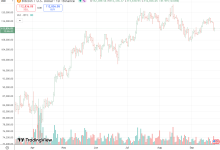Cronos Upgrade: CRO Price Outlook Post‑Smarturn—Opportunity or Overhyped?


The has recently completed its highly anticipated Smarturn mainnet upgrade, promising enhanced smart account functionality, improved interoperability, and upgraded EVM features.
As the ecosystem evolves, investors and developers alike are asking: will these technical improvements translate into tangible growth for CRO, the chain’s native token, or is the hype surrounding Smarturn overstated?
This article examines the upgrade’s features, market reaction, and the potential implications for CRO’s price, providing a balanced outlook on whether this milestone represents a real opportunity or simply inflated expectations.
Background: What is Smarturn?
The Cronos chain has officially announced and implemented its “” mainnet upgrade (EVM v1.5.0). The upgrade includes several major protocol improvements:
- Support for smart accounts under, which allows an externally owned account (EOA) to act like a smart‑contract account, enabling features like batching transactions, custom permission logic, and alternate gas payment options.
- Upgraded EVM client (Go‑ETH v1.15.11), alignment with Prague and Cancun forks, new opcodes (TSTORE, TLOAD, MCOPY), and other performance improvements.
- Increased interoperability and infrastructure enhancements: IBC (Inter‑Blockchain Communication) improvements, quicker RPC endpoints, improved developer tooling.
- The upgrade was targeted at block height 38,432,212 (~30 October 2025).
In short: this isn’t just a “minor patch”; the Smarturn upgrade represents a meaningful technical milestone for Cronos, enhancing both developer experience and network infrastructure.
What this upgrade means for Cronos & CRO
From a token and ecosystem perspective, the potential implications are several:
- Enhanced Developer Appeal: With better account abstraction (smart accounts) and improved performance, Cronos is more attractive for developers who want richer wallet logic, lower friction for end‑users, and better interoperability. An uptick in developer activity can drive network usage.
- Potential Increased Utility: As usage grows, more transactions, more value locked (TVL), more cross‑chain flows, the native token (CRO) may benefit through staking, fees, ecosystem incentives, or simply higher demand for access to the chain.
- Market Signaling: Having a major upgrade can assist revive confidence in Cronos, reposition it among EVM‑compatible chains, and potentially attract institutional interest. Some articles highlight that, beyond the upgrade, possible ETF exposure or other strategic moves could benefit CRO.
However, while the fundamentals appear supportive, execution matters. Upgrades only translate into growth if developer adoption, user activity, and ecosystem momentum follow through.
Real‑world market reaction & risk factors
Despite the significant upgrade, the market response has been more muted or cautious than might have been hoped:
- In the days leading up to the upgrade, CRO’s price experienced a ~22 % decline. One report cited the drop and raised questions whether the upgrade alone could reverse entrenched bearish sentiment.
- Technical chart patterns and indicators suggest short‑ and mid‑term tradeing pressure. For example, one analysis noted CRO trading below key moving averages and in a descending triangle pattern, which is typically a bearish signal unless broken.
- The crypto sector remains sensitive to interest‑rate decisions, regulatory clarity, and institutional flows. One article pointed out that despite Smarturn’s strengths, the token is down 22 % over the past month and remains at risk from market volatility.
In other words, the upgrade is a positive datapoint, but the market may be waiting for proof of adoption rather than just an announcement.
CRO Price Outlook: Opportunity vs. Overhyped?
Let’s break this into two possible scenarios.
Scenario A – Opportunity
If everything lines up:
- Cronos succeeds in attracting more developers, dApps deploy or migrate, and increased transaction volume and cross‑chain flows materialize.
- The upgraded infrastructure shows tangible benefits (lower latency, higher throughput, smarter wallets), leading to user growth and ecosystem effects.
- begins to function more broadly (staking, fees, ecosystem incentives) and institutional interest (e.g., inclusion or large ecosystem funds) kicks in.
- In this scenario, CRO could benefit meaningfully. One analysis suggests that if CRO rebounds from its support zone (~$0.143 at the time) and breaks resistance near ~$0.16‑$0.17, a move toward ~$0.21 is plausible.
Scenario B – Overhyped
Alternatively:
- Technical upgrades remain underutilized; developer momentum fails to pick up; TVL and transactions stay stagnant.
- The broader crypto market remains fragile or views fresh downward pressure, dragging CRO with it regardless of the upgrade.
- The market has already priced in the upgrade (or partially priced it), and thus, there is little room for surprise upside.
- In this situation, the upgrade might not lead to sustained upside, and could either consolidate for an extended period or even head lower if support fails (for example, down toward ~$0.12 or below).
Short‑term vs Long‑term
- Short‑Term (Weeks/Months): The outlook remains cautious. The technicals suggest consolidation or downside risk unless there’s a clear positive catalyst (e.g., a major dApp launch, partnership).
- Long‑Term (6- 12+ Months): Better territory for the upgrade’s effect to manifest. If Cronos executes post‑Smarturn and gains developer/usage traction, CRO could benefit materially, but this requires patience and monitoring of ecosystem metrics.
Key Metrics & Technical Levels to Watch
For those tracking CRO post‑upgrade, keep an eye on:
- Support and Resistance Zones: One article cites ~$0.143 as a critical support; breakout above ~$0.16‑$0.17 may open more upside.
- Ecosystem Adoption Indicators: Total Value Locked (TVL) on, number of active dApps on Cronos, cross‑chain flows into/from Cronos, developer activity (GitHub commits, deployments)
- Macro and Market Sentiment: Crypto market health, regulatory news, institutional flows, ETF filings that include CRO or Cronos
- Execution of Upgrade Features: Uptake of smart account features, real-world wallet usage, improvements in transaction cost/latency, new tools leveraging Smarturn features
- Token Metrics: Supply dynamics (circulating vs total supply), staking participation (if applicable), token‑economics shifts in the ecosystem
- Tracking a mix of “on‑chain fundamentals” + “technical price signals” will give a more complete picture.
Smarturn’s Real Test: From Technical Success to Ecosystem Adoption
The Smarturn upgrade for Cronos is a meaningful technical milestone: smart account support, new opcodes, improved interoperability, and developer‑friendly enhancements all position the chain for better competitiveness. However, from a price‑outlook standpoint for CRO, the picture is mixed.
Short‑term risk remains strong due to fragile market sentiment, the disappointing immediate price reaction, and technical pressures. The upgrade announcement alone is unlikely to drive a dramatic rebound unless adoption follows. On the flip side, if Cronos executes on Smarturn and views genuine ecosystem growth, then CRO may indeed represent an opportunity rather than just hype.
In effect, CRO post‑Smarturn is a conditional opportunity: the upside exists, but so does the risk of disappointment. Investors should monitor ecosystem metrics closely, not rely purely on upgrade announcements, and keep expectations realistic about timing and adoption.







